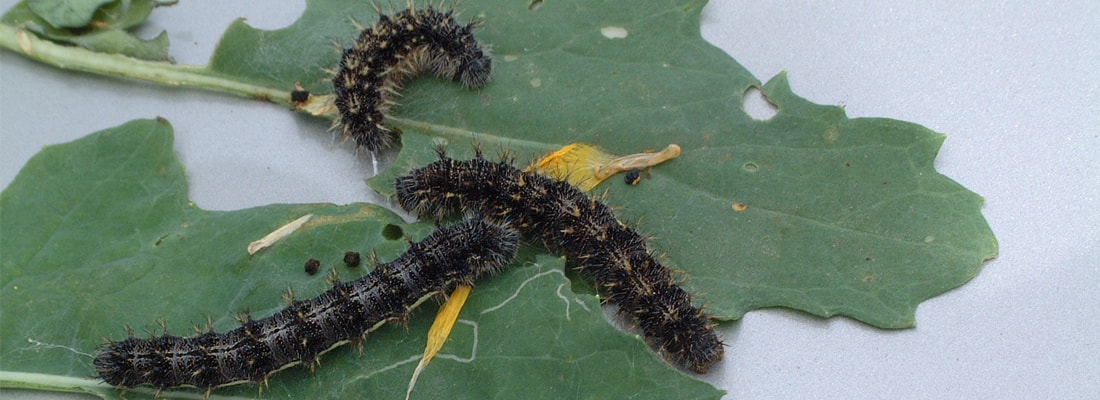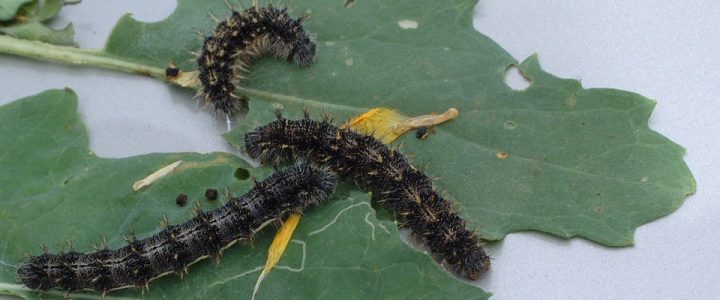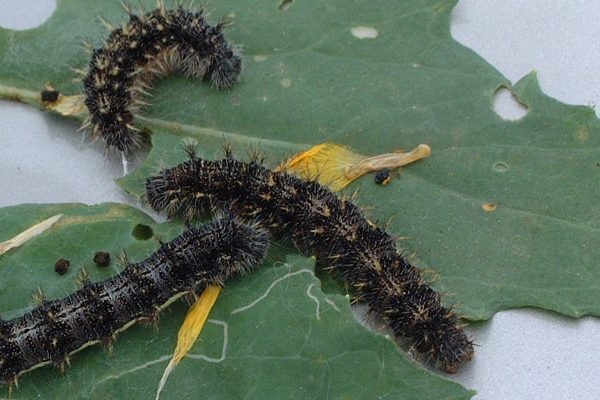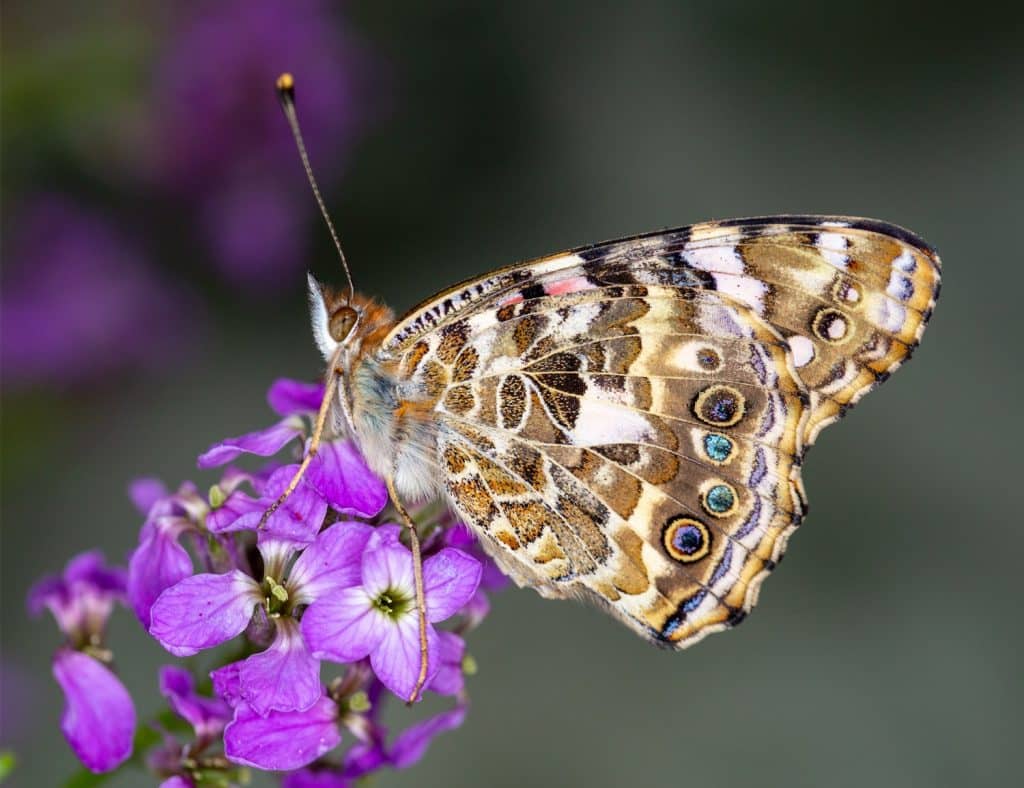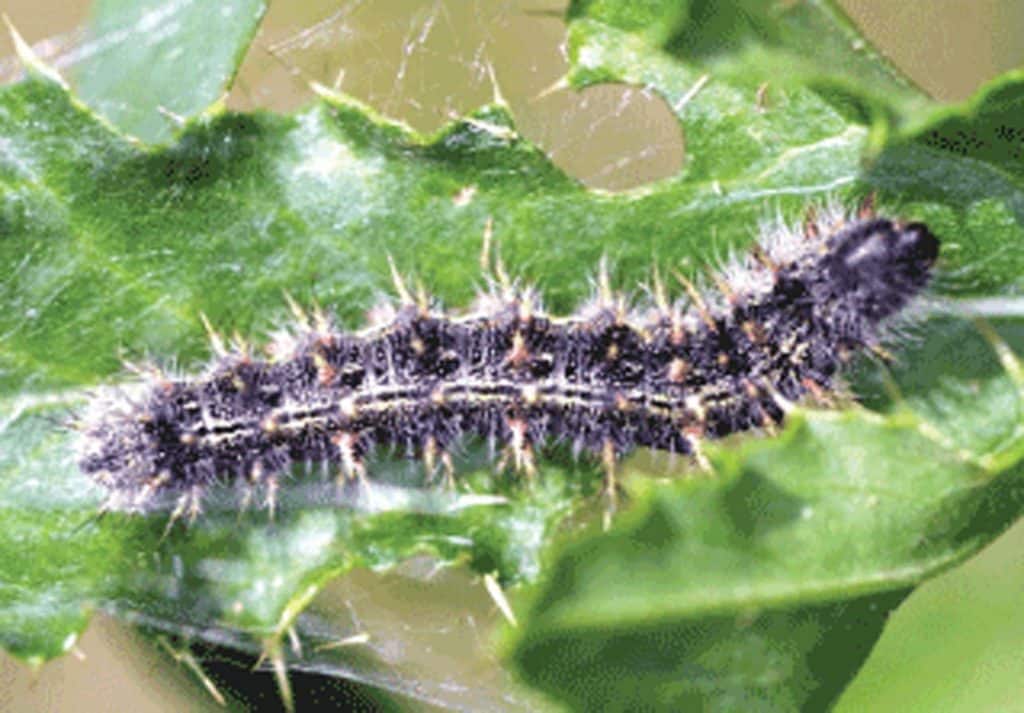The painted lady or thistle butterfly (Vanessa cardui (L.)) is an occasional pest of canola, with the larval stage causing the damage. Fortunately, larvae feed primarily on Canada thistle leaves, leaving the stem and midrib. Feeding temporarily inhibits the weeds but new growth usually develops in the fall. They also feed on about 60 other hosts, including soybeans, sunflowers and canola.
Identification and life cycle
The painted lady butterfly is one of the most widely distributed, and recognized in the world. Adults are irruptive migrants into the Prairies, overwintering in Mexico and arriving on the Prairies in early June. There is no evidence that they can survive our cold winters. This butterfly normally prefers to lay eggs on Canada thistle plants but under some conditions will lay eggs on other plants. Larvae feed on the leaves producing loose webbing and, if numerous, can completely defoliate a plant. The larvae are up to 30 millimetres (1.2 inch) long and dark purple to black in colour. They have long spines on each segment of the abdomen 1.
Management
This occasional pest is usually limited to small, scattered patches within a field, so insecticide treatments are rarely justified.
One concern with this normally beneficial insect arises when fecal pellets webbed on thistles are harvested with the canola seed. Grade standards have a low tolerance to insect excreta.
Footnotes
- Phillip, H., Mori, B.A, & Floate, K.D. 2018. Field crop and forage pests and their natural enemies in Western Canada: Identification and management field guide. Agriculture and Agri-Food CanadaAgriculture and Agri-Food Canada is a department of the Government of Canada. More. Saskatoon, SK.[↩]
